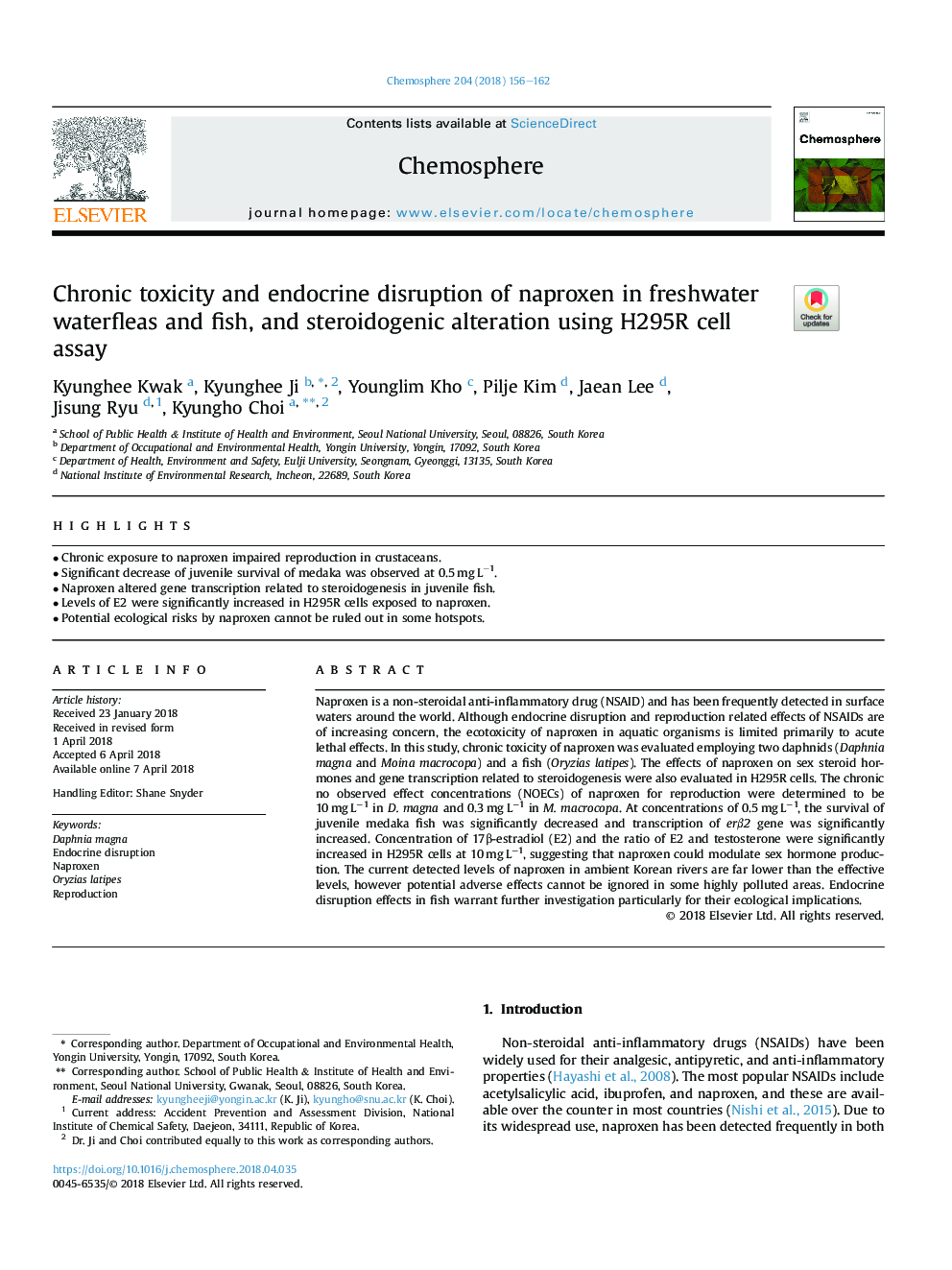| Article ID | Journal | Published Year | Pages | File Type |
|---|---|---|---|---|
| 8851170 | Chemosphere | 2018 | 7 Pages |
Abstract
Naproxen is a non-steroidal anti-inflammatory drug (NSAID) and has been frequently detected in surface waters around the world. Although endocrine disruption and reproduction related effects of NSAIDs are of increasing concern, the ecotoxicity of naproxen in aquatic organisms is limited primarily to acute lethal effects. In this study, chronic toxicity of naproxen was evaluated employing two daphnids (Daphnia magna and Moina macrocopa) and a fish (Oryzias latipes). The effects of naproxen on sex steroid hormones and gene transcription related to steroidogenesis were also evaluated in H295R cells. The chronic no observed effect concentrations (NOECs) of naproxen for reproduction were determined to be 10â¯mgâ¯Lâ1 in D. magna and 0.3â¯mgâ¯Lâ1 in M. macrocopa. At concentrations of 0.5â¯mgâ¯Lâ1, the survival of juvenile medaka fish was significantly decreased and transcription of erβ2 gene was significantly increased. Concentration of 17β-estradiol (E2) and the ratio of E2 and testosterone were significantly increased in H295R cells at 10â¯mgâ¯Lâ1, suggesting that naproxen could modulate sex hormone production. The current detected levels of naproxen in ambient Korean rivers are far lower than the effective levels, however potential adverse effects cannot be ignored in some highly polluted areas. Endocrine disruption effects in fish warrant further investigation particularly for their ecological implications.
Related Topics
Life Sciences
Environmental Science
Environmental Chemistry
Authors
Kyunghee Kwak, Kyunghee Ji, Younglim Kho, Pilje Kim, Jaean Lee, Jisung Ryu, Kyungho Choi,
